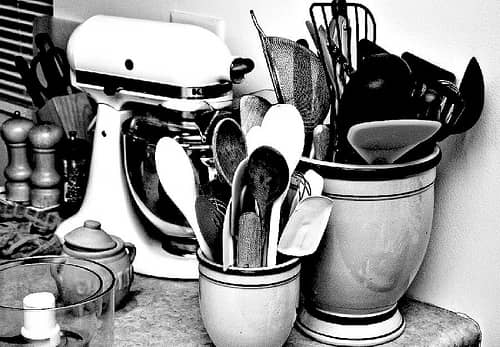 Cross contamination is a big concern among food allergy sufferers. According to Kids with Food Allergies, cross contamination can be defined as “a food being inadvertently contaminated with food proteins other than those listed on the food label during the course of its being prepared, stored or served”.
Cross contamination is a big concern among food allergy sufferers. According to Kids with Food Allergies, cross contamination can be defined as “a food being inadvertently contaminated with food proteins other than those listed on the food label during the course of its being prepared, stored or served”.
During Manufacturing and Production:
One way that cross contamination may occur is during the manufacturing of a food. For example, when a safe food is manufactured on the same equipment as an unsafe food, there is a chance for trace amounts of the unsafe food to end up in the safe food. For those with food allergies, even trace amounts of an allergen can lead to serious allergic reactions.
Although the Food Allergen Labeling and consumer Protection Act of 2004 (FALCPA) requires manufacturers to clearly list the top 8 allergens on the food label, this rule does not account for cross contamination. Sometimes you will see “may contain (allergen)” or “made in a facility that also produces (allergen)” on a label but the manufacturers are not required to list this information. If you have any doubts, call the manufacturers and ask about the possibility of cross contamination. If your child’s allergies are severe and the manufacturer can’t guarantee it is safe, its probably not worth the risk.
By the way, this is why we are proud to say that Neocate is the only amino acid-based infant formula prepared in a 100% milk-free manufacturing site, eliminating the risk for cross contamination!
At Home:
Cross contamination can also happen in your home. Here are a few tips to avoid cross-contamination at home:
- Label your foods as “Safe” and “Unsafe” and keep them stored in separate areas of the refrigerator or pantry. The same goes for plates, utensils and cups. Keep a separate set for your allergic child, and make sure that they look different to avoid a potential mix-up.
- When preparing a meal, always make non-allergenic foods first. You should also leave allergenic ingredients in the pantry/fridge until you are completely finished preparing your allergic child’s meal. It is also a good idea to serve food in only the kitchen and dining room. This way you don’t have to worry about stray crumbs or residue in other parts of the house.
- Finally, one of the best (and easiest!) defenses against cross-contamination is frequent hand washing. Everyone in your household should wash their hands after touching or eating allergenic foods and before touching or serving non-allergenic foods.
Eating Out:
Eating out can be intimidating for those with food allergies because you have less control over how foods are handled and efforts to minimize cross contamination. For helpful tips, check out this article from Food Allergy Gourmet.
Food Safety for Everyone:
The risk of cross contamination is not limited to allergy sufferers. Cross contamination of bacteria from foods (such as raw meat, seafood and eggs) is a concern for everyone.
Have any of your children experienced an allergic reaction as a result of cross contamination? Any advice to offer other parents?
–






